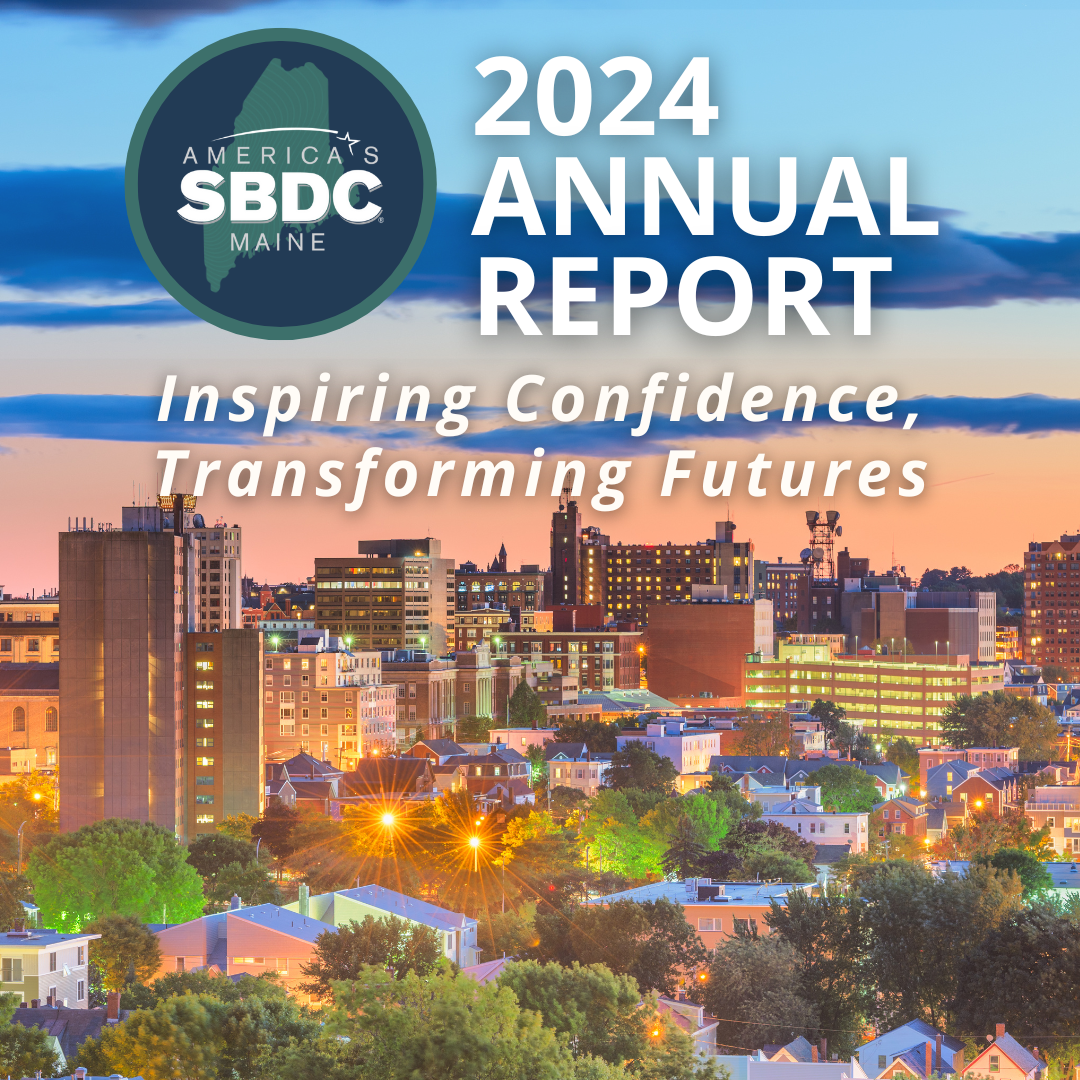 One of the final hurdles in starting your own business is finding a suitable location to hang your shingle. At the SBDC, we often see sole proprietors who have just begun their ventures working from home. However, we also work with micro-entrepreneurs (companies with less than 10 employees) who need to rent enough space to sell goods or provide services and have room for a few employees. They need to find a suitable location that will allow them to have a little room to grow but stay within their budget.
One of the final hurdles in starting your own business is finding a suitable location to hang your shingle. At the SBDC, we often see sole proprietors who have just begun their ventures working from home. However, we also work with micro-entrepreneurs (companies with less than 10 employees) who need to rent enough space to sell goods or provide services and have room for a few employees. They need to find a suitable location that will allow them to have a little room to grow but stay within their budget.
Blog
Winnie’s Beauty Salon – South Portland
 When Winnie Ogweta opened Winnie’s Beauty Salon in South Portland, she set out to do more than style hair. As the first Black-owned salon in South Portland, and one of just a handful across Maine, her business represents an important milestone and a new opportunity. As a licensed hairstylist, Winnie wanted to create a space where clients could find both quality service and inspiration to pursue their own careers in the beauty industry. Read More
When Winnie Ogweta opened Winnie’s Beauty Salon in South Portland, she set out to do more than style hair. As the first Black-owned salon in South Portland, and one of just a handful across Maine, her business represents an important milestone and a new opportunity. As a licensed hairstylist, Winnie wanted to create a space where clients could find both quality service and inspiration to pursue their own careers in the beauty industry. Read More
How Small Businesses Can Strategize During an Economic Downturn
 The 2008 financial crisis and the 2020 pandemic recession left lasting marks on the Maine small business community. Yet, in each case, some Maine businesses found ways to not only weather the storm but adapt and grow in new directions.
The 2008 financial crisis and the 2020 pandemic recession left lasting marks on the Maine small business community. Yet, in each case, some Maine businesses found ways to not only weather the storm but adapt and grow in new directions.
Today’s economic climate brings its own set of uncertainties. While the challenges may differ, the need for proactive planning and strategic thinking remains just as important. Some industries, like auto repair, healthcare, or agriculture, have historically shown resilience during downturns. But more often, a business’s ability to adapt determines how well it navigates change.
Rather than trying to predict how the economy will behave, business owners can prepare by evaluating their operations, strengthening their financial position, and staying open to creative pivots.
What We’re Seeing on the Ground
Some business owners planning to sell in the coming years have moved up their timelines, driven by economic uncertainty and broader demographic trends, such as Maine’s aging population. Others are reaching out to the Maine SBDC to evaluate operations and improve efficiency.
With borrowing costs doubling in the last 18 months, many are delaying plans to take out loans. In addition, businesses are scaling back hiring plans and relying on smaller teams to maintain operations. Inflation, increased wages, and a more cautious consumer environment have encouraged businesses to become leaner and more resource conscious.
Strengthening Financial Resilience
 The most immediate action business owners can take is to reassess their pricing strategy. In Maine, business owners often hesitate to raise prices due to customer sensitivity. However, persistent inflation means many businesses continue to charge less than their products or services are worth, squeezing profit margins and limiting opportunities for reinvestment or growth. Over time, this can lead to burnout.
The most immediate action business owners can take is to reassess their pricing strategy. In Maine, business owners often hesitate to raise prices due to customer sensitivity. However, persistent inflation means many businesses continue to charge less than their products or services are worth, squeezing profit margins and limiting opportunities for reinvestment or growth. Over time, this can lead to burnout.
Contingency planning is another critical step. Lessons learned during the COVID-19 recession showed how important it is to have alternatives in place when supply chains break down or resources become scarce. Owners should actively look for more favorable terms from vendors, identify backup suppliers, and build a reserve fund when possible.
Small, strategic changes made now can significantly improve stability during times of disruption.
Advice for New Entrepreneurs
If you’re considering starting a business now, approach planning realistically. After developing a financial projection for your first year, consider reducing your projected revenue by 10% as a buffer. This simple adjustment ensures your business plan is robust enough to handle slower periods.
It is also helpful to consider whether your product or service offers such considerable value that people will continue to pay for it even during a downturn. This can be the difference between a sustainable business and one that struggles in tighter markets.
Launching in a challenging time is feasible, but it requires a higher level of discipline, adaptability, and focus on core value.
Common Traits of Resilient Businesses
 Certain side gigs and service-based businesses tend to remain strong during downturns. These include repair services, selling used or refurbished goods, and businesses focused on local food. Consumers often stretch their dollars by choosing repairs over replacements, hiring local contractors, or buying secondhand items.
Certain side gigs and service-based businesses tend to remain strong during downturns. These include repair services, selling used or refurbished goods, and businesses focused on local food. Consumers often stretch their dollars by choosing repairs over replacements, hiring local contractors, or buying secondhand items.
Businesses connected to local food also tend to gain traction. With food prices rising in recent years, more people are producing at home and selling goods through markets or informal channels.
In addition, services like auto repair and towing remain in demand because vehicles always require maintenance. Health-related services may also see steady or increased demand, as economic stress can, unfortunately, contribute to physical and mental health challenges.
Resilience Is a Strategy
There are opportunities. For instance, while people may cut back on restaurants or entertainment, they will always need food. During the 2008 recession and the COVID-19 pandemic, many farms experienced increased demand. Interestingly, during stronger economic times, such as 2019, local farms sometimes struggled more, illustrating how overall strength in the economy doesn’t always correlate directly to success in business.
Another interesting twist is how investor behavior changes during recessions. When stock market returns decline, some investors look to small businesses or startups as alternative investments. Although traditional lenders may be more cautious, this shift can create new opportunities for funding as others dry up.
What’s that old saying, “When one door closes, another opens.”
How the SBDC Can Help
When you’re navigating challenging decisions, having a second set of eyes can clarify your options and identify the best path forward. A conversation with a Maine SBDC advisor can bring structure and confidence to decisions during stressful times.
Owlbear’s Rest – Westbrook
 For Patty and Matt, Maine is where they built their family and careers. Now, they are preparing to open their dream business. Owlbear’s Rest brings people together through great games, good food, and a welcoming community. With an extensive library of board and roleplaying games, cozy seating, and a thoughtfully crafted menu featuring local producers, Patty and Matt are creating an inviting space where play is encouraged. Read More
For Patty and Matt, Maine is where they built their family and careers. Now, they are preparing to open their dream business. Owlbear’s Rest brings people together through great games, good food, and a welcoming community. With an extensive library of board and roleplaying games, cozy seating, and a thoughtfully crafted menu featuring local producers, Patty and Matt are creating an inviting space where play is encouraged. Read More
Evergreen Grooming – Hampden
 For many years, Veronica Page, a Maine native, worked as a dog groomer for others, but she wanted the opportunity to provide better service on her own terms. She dreamed of opening a place of her own but didn’t know where to start.
For many years, Veronica Page, a Maine native, worked as a dog groomer for others, but she wanted the opportunity to provide better service on her own terms. She dreamed of opening a place of her own but didn’t know where to start.
Motivating and Managing a Small Team: Strategies for Small Business Success
 Team motivation is not just a workplace perk. It plays a critical role in productivity, customer service, employee retention, and innovation. In a recent Maine SBDC webinar, Business Advisor Christina Dodge focused on how small business owners can build a motivated and accountable team with limited time and resources.
Team motivation is not just a workplace perk. It plays a critical role in productivity, customer service, employee retention, and innovation. In a recent Maine SBDC webinar, Business Advisor Christina Dodge focused on how small business owners can build a motivated and accountable team with limited time and resources.
In this blog, you will find strategies shared during the session to help you motivate your team and build a healthier workplace culture.
Know Your Team and What Drives Them
Understanding your team starts with recognizing their personalities, workstyles, and strengths. Some are driven by external rewards, others by purpose, learning, or independence. Knowing the difference between extrinsic and intrinsic motivation helps business owners tailor their approach.
For small teams, this can be easier to manage, and the payoff is often substantial. Personalized motivation leads to stronger engagement and better performance.
Communication, Trust, and Empowerment
Effective communication is essential. Regular check-ins should be part of your routine, whether your staff is in person or remote. They do not need to be long, but they should be consistent and encourage real dialogue. Using tools like Teams or Slack can support more frequent collaboration.
Trust grows from consistency and transparency. Employees need to understand your goals and the challenges the business is facing. Being honest, treating people fairly, and sharing both successes and setbacks helps build trust. It also gives employees a clear sense of where they fit into the bigger picture.
Empowering employees means giving them ownership over their work and encouraging problem solving. Micromanagement can damage trust. When employees feel trusted, they are more likely to step up and succeed.
Recognize, Celebrate, and Build a Positive Culture
Recognition is a powerful motivator. Whether public or private, what matters is that it feels meaningful to the employee. A handwritten thank-you note, a shoutout at a staff meeting, or a feature on social media can go a long way.
A positive team culture encourages collaboration over competition. Team building, brainstorming, and casual check-ins help people connect, even when schedules differ. Icebreakers that prompt staff to share stories or interests help strengthen relationships.
Providing growth opportunities is another important part of motivation. Training, certifications, and even small steps toward career advancement let employees know you are invested in their future, not just the task at hand.
Address Issues Early and Lead with Empathy
Feedback should be timely, specific, and actionable. Delaying feedback can allow issues to grow. Constructive feedback should be balanced with recognition of what the employee is doing well. When issues are discussed with fairness and clarity, employees are more likely to improve and stay engaged.
Conflict is often one of the hardest areas for small business owners. Time is limited, and staffing challenges may make it tempting to let small issues slide. But unresolved conflict can create tension across the team. A respectful, open environment for feedback gives everyone a voice and helps prevent bigger problems.
Empathy also plays an important role. Being approachable and listening actively shows that you value your team. Personal concerns may arise that affect someone’s workday. For example, if an employee is dealing with the loss of a pet or family member, offering flexibility with scheduling or giving them space to regroup can show genuine support. Healthy boundaries matter, but support during tough times can leave a lasting impact.
Final Thoughts
Your team looks to you for cues on how to behave and what matters. If you demonstrate accountability, consistency, and a strong work ethic, your employees are more likely to follow that example. Motivation and management are essential to building a strong team.
To watch the full webinar, visit our YouTube channel. If you are interested in applying these strategies in your own business, the Maine SBDC offers no-cost advising to help you take the next step. Learn more at www.mainesbdc.org.
Kevin Browne Architecture – Falmouth
Kevin Browne is the founder of Kevin Browne Architecture (KBA), a residential architecture firm based in Falmouth. They focus on thoughtful and lasting designs that cater to their clients’ unique needs.
News Release: Maine SBDC Releases 2024 Results
February 19, 2025
Maine SBDC Releases 2024 Results: Supporting and empowering entrepreneurs throughout Maine
 Portland, Maine – The Maine Small Business Development Centers (SBDC) is proud to announce the release of its 2024 Annual Report. The report, available here, highlights the Maine SBDC’s impact in supporting Maine’s entrepreneurs and small businesses. The report showcases the tangible outcomes in 2024 and spotlights individual success stories that underscore the powerful effect of the program’s business advising and training services.
Portland, Maine – The Maine Small Business Development Centers (SBDC) is proud to announce the release of its 2024 Annual Report. The report, available here, highlights the Maine SBDC’s impact in supporting Maine’s entrepreneurs and small businesses. The report showcases the tangible outcomes in 2024 and spotlights individual success stories that underscore the powerful effect of the program’s business advising and training services.
In 2024, business advisors across Maine provided no-cost, confidential business advising to 2,227 entrepreneurs and small businesses. They spent nearly 8,800 hours assisting clients which helped to:
- Start 132 new businesses
- Save and create 526 jobs
- Access $34 million in funding
“Maine’s small businesses continue to demonstrate resilience, determination, and a drive for success. Our 2024 Annual Report reflects their achievements and the critical role the Maine SBDC plays in providing expert guidance to help them navigate challenges, capitalize on opportunities, and build stronger businesses. We are proud to support Maine’s entrepreneurs in their journey toward long-term growth and stability,” commented Maine SBDC State Director Mark Delisle.
To access the full 2024 Digital Annual Report, visit:
www.mainesbdc.org/annual-report/2024/
About the Maine Small Business Development Centers (Maine SBDC):
The Maine SBDC helps build and strengthen small businesses through no-cost, confidential business advising, training, and educational resources. It is part of a national network of nearly 1,000 centers. The program is funded through a cooperative agreement with the U.S. Small Business Administration, the Maine Department of Economic and Community Development, and the University of Southern Maine. For more information about Maine SBDC, visit www.mainesbdc.org or call 207-780-4420.
China Lake Provisions – China
 Mike Brown envisioned creating a welcoming space where the community could find high-quality, locally sourced food. That vision became China Lake Provisions, a deli, pizza, and sub shop offering a variety of healthy foods and local goods.
Mike Brown envisioned creating a welcoming space where the community could find high-quality, locally sourced food. That vision became China Lake Provisions, a deli, pizza, and sub shop offering a variety of healthy foods and local goods.
When Mike and his team first set out to open their business, they faced a major hurdle: securing financing. Unsure where to start, they turned to the Maine SBDC after a recommendation from their local chamber of commerce.
Mandy’s Paw-sitive Strides – Patten
 Mandy’s Paw-sitive Strides is a dog-walking business owned and operated by Mandy Lyman, a dedicated animal lover in Patton, Maine. Mandy provides 30-minute walks for dogs, ensuring they receive exercise and care while their owners are busy. Fully licensed and insured, Mandy has also participated in dog obedience classes to deliver top-notch service.
Mandy’s Paw-sitive Strides is a dog-walking business owned and operated by Mandy Lyman, a dedicated animal lover in Patton, Maine. Mandy provides 30-minute walks for dogs, ensuring they receive exercise and care while their owners are busy. Fully licensed and insured, Mandy has also participated in dog obedience classes to deliver top-notch service.
Mandy came to the Maine SBDC in April 2023 with a dream of starting her own dog-walking business. Mandy wanted to contribute to her community and earn her own income. Her initial goal was to attract 3 to 4 regular clients and work 4 to 6 hours weekly, but she needed guidance and resources to make it a reality.